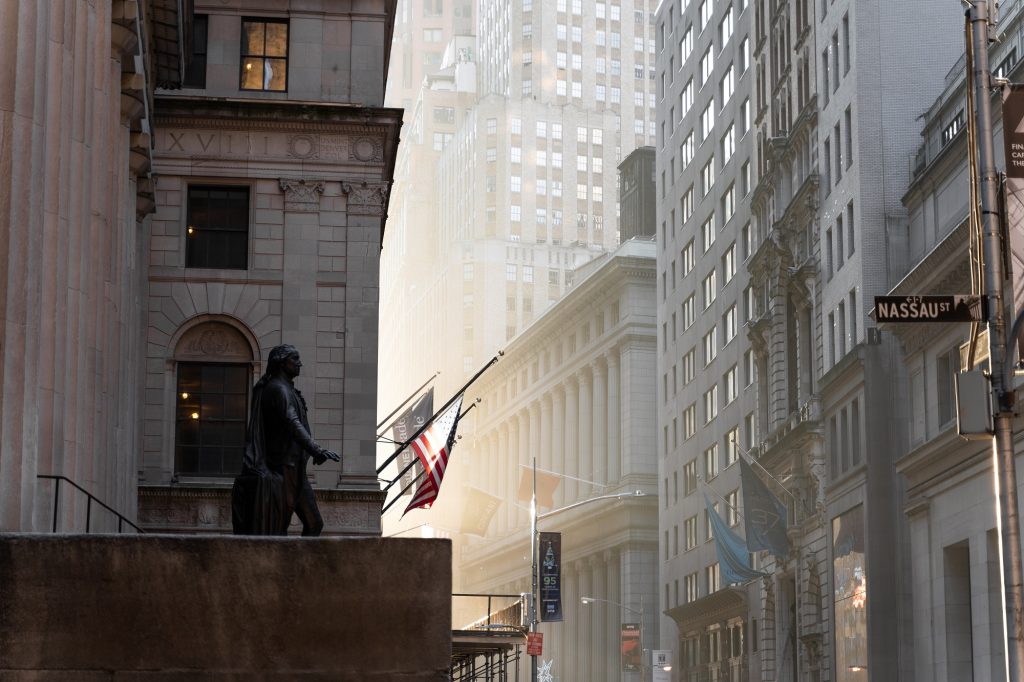economy online news
New York (AP) — U.S. stocks are sinking Tuesday, as worries about interest rates staying high continue to hit Wall Street. online news
The S&P 500 was 1% lower in morning trading and on track for a second drop after setting an all-time high to close last week. The Dow Jones Industrial Average also pulled further from its record and was down 417 points, or 1.1%. The Nasdaq composite was 1.4% lower, as of 10:30 a.m. Eastern time.
Health care companies led the market lower on worries about their upcoming profits after the U.S. government announced lower-than-expected rates for Medicare Advantage. Humana tumbled 13.6%. Tesla, meanwhile, dropped 5.7% after delivering far fewer vehicles for the start of 2024 than analysts expected.
One of the big reasons the U.S. stock market has been on a nearly unstoppable run since late October is the expectation that the Federal Reserve will cut interest rates several times this year. It’s hinted as much, and an easing of rates would relieve pressure on both the economy and financial system.
But Fed officials have also said they need further confirmation that inflation is heading sustainably down to their 2% target before acting. A surprisingly strong report on U.S. manufacturing Monday, which showed a return to growth after 16 straight months of contraction, hurt those expectations.
It’s the latest evidence of a remarkably resilient U.S. economy, but it could also add upward pressure on inflation. Progress on inflation has become bumpier recently, with reports this year coming in hotter than expected.
economy online news
Traders have already drastically reduced their expectations for how many times the Federal Reserve will cut interest rates this year, halving them from a forecast of six at the start of the year. That would be in line with the three cuts that Fed officials themselves have hinted at.
Monday’s manufacturing report pushed traders to shade some bets toward just two cuts this year, according to data from CME Group. But traders are still largely expecting three cuts this year, and for them to begin in June, after a report on Tuesday showed U.S. employers were advertising roughly the same number of job openings in February as they were a month earlier.
In the bond market, the yield on the 10-year Treasury rose to 4.36% from 4.33% late Monday.
The two-year yield, which moves more closely with expectations for Fed action, slipped to 4.69% from 4.71% late Monday.
High rates slow the economy by design, by making borrowing more expensive. They also hurt prices for investments by making it more attractive for investors to put money instead in safer alternatives. Bitcoin tumbled 5.4% and dropped back to $66,000.
Beyond worries about interest rates staying high, critics also say the U.S. stock market has simply gotten too expensive after soaring more than 20% in six months. Companies will likely need to deliver strong growth in profits to justify such big moves.
economy online news
On Wall Street, several health care stocks led the market lower as worries rose about their upcoming profits. Analysts at Citi Research said the final Medicare Advantage rate approved by the government was well below expectations given higher-trending medical costs and a big lobbying push for the industry.
UnitedHealth Group fell 6.5%, and CVS Health lost 8.3%.
PVH, the company behind Calvin Klein and Tommy Hilfiger, lost more than a fifth of its value despite reporting stronger profit for the latest quarter than analysts expected. Its forecast for profit this upcoming year fell short of analysts’ estimates, in part due to weakness in Europe, and its stock dropped 22.6%.
Among the few gainers on Wall Street were stocks of oil and gas producers. Exxon Mobil climbed 1.4%, and ConocoPhillips gained 1.2%
They followed the price of crude higher. A barrel of benchmark U.S. oil rose 0.8% to $84.39 and is back to where it was in October. A barrel of Brent crude, the international standard, climbed 0.8% to $88.15.
In Europe, stocks were falling 1% in Paris. Germany’s DAX lost 1.1%, and London’s FTSE 100 was 0.2% lower.
In Asia, indexes were mixed. Hong Kong’s Hang Seng jumped 2.4%, but moves were much more modest elsewhere.
AP Writers Matt Ott and Zimo Zhong contributed.
economy online news
Notes from APS Radio News
Reportedly because of what was being called a “pandemic”, a number of the world’s central banks embarked on massive programs of monetary expansion, starting in late February and early March of 2020.
For its part, between the early part of March of 2020 to over a year later, the US Federal Reserve added over $4 trillion to its holdings, by purchasing billions of dollars’ worth of Treasury bonds and corporate bonds each month during that period.
As well, at that time it kept interest rates rather low.
Other central banks, including the Bank of Japan and the European Central Bank, followed similar policies.
In addition, during that period many countries engaged in lockdowns; many small and medium-sized businesses and enterprises were shuttered by way of orders issued by public health officials, politicians and various administrators.
One of the direct causes of those shutdowns was the development of shortages.
According to a number of economists, the combination of shortages of various goods and services and massive programs of “quantitative easing” led to substantially higher rates of inflation.
In consequence of shuttered economies and higher rates of inflation in the first world, less developed countries suffered greatly, due, in part, to shortages of supplies and due to lowered demand.
For some time, in its articles about China, The Wall Street Journal has pointed to “covid” related lockdowns as being one of the major causes of China’s downturn in its economy.
In the US, by October of 2020, over 100,000 businesses had been shuttered by way of lockdowns.
While many news publications continue to blame problems ranging from a drop in academic standards to levels of inflation a few years ago not seen since the early part of the 1980’s on the “pandemic”, various other observers blame the policies that were implemented in 2020 and beyond.


